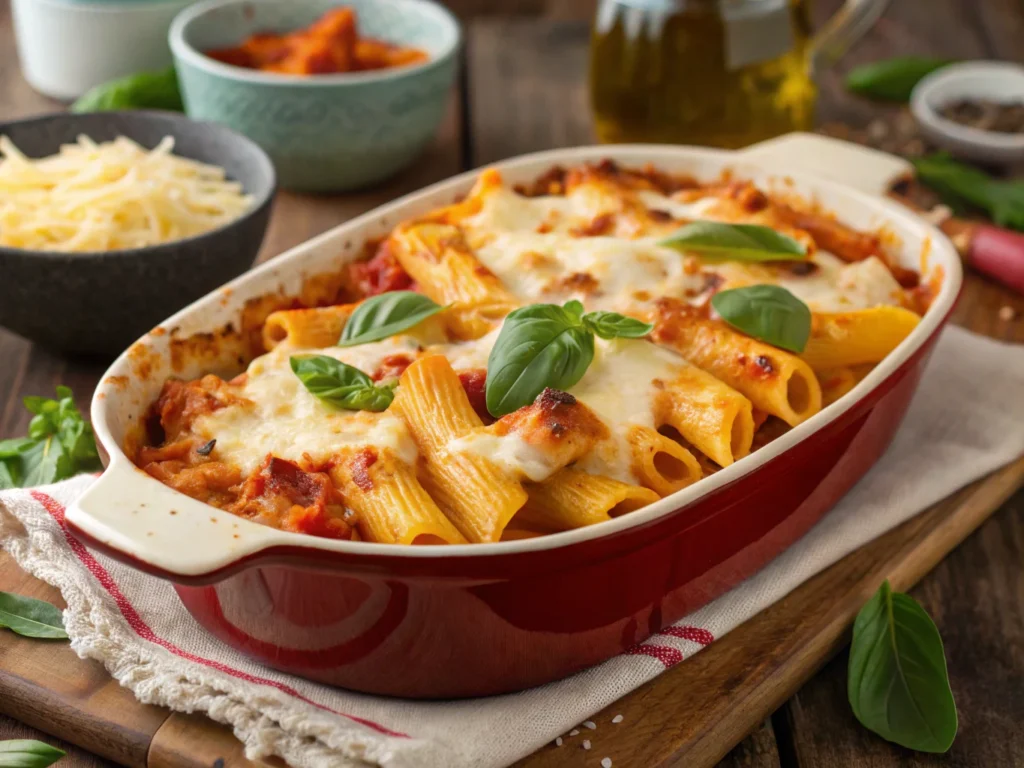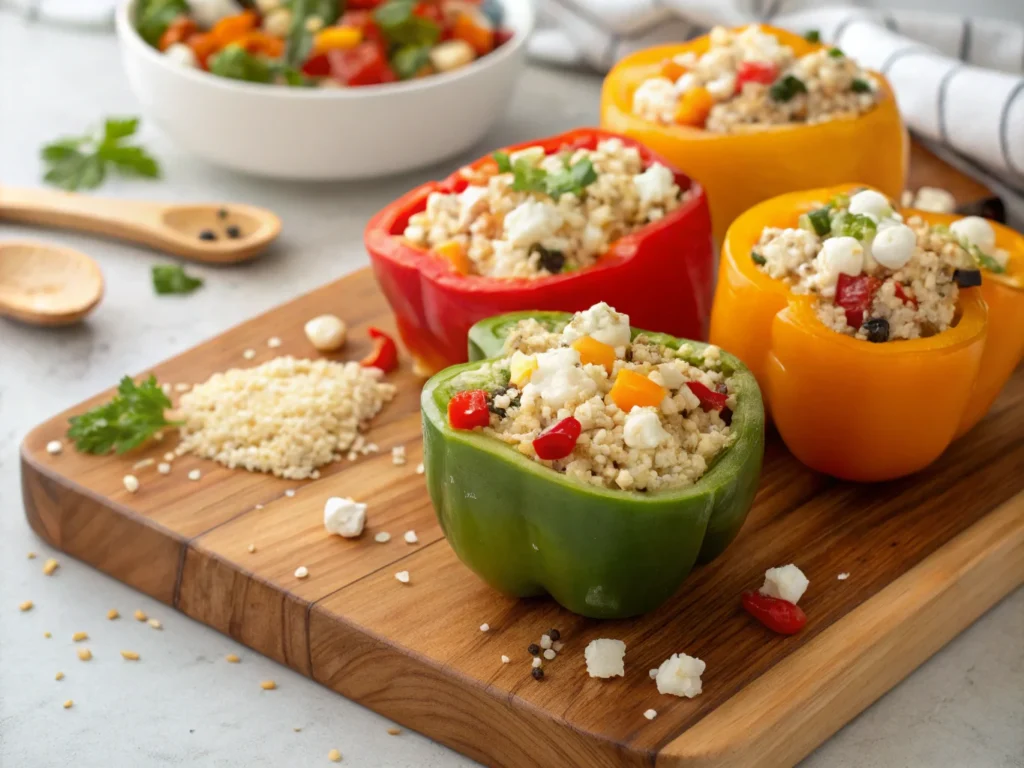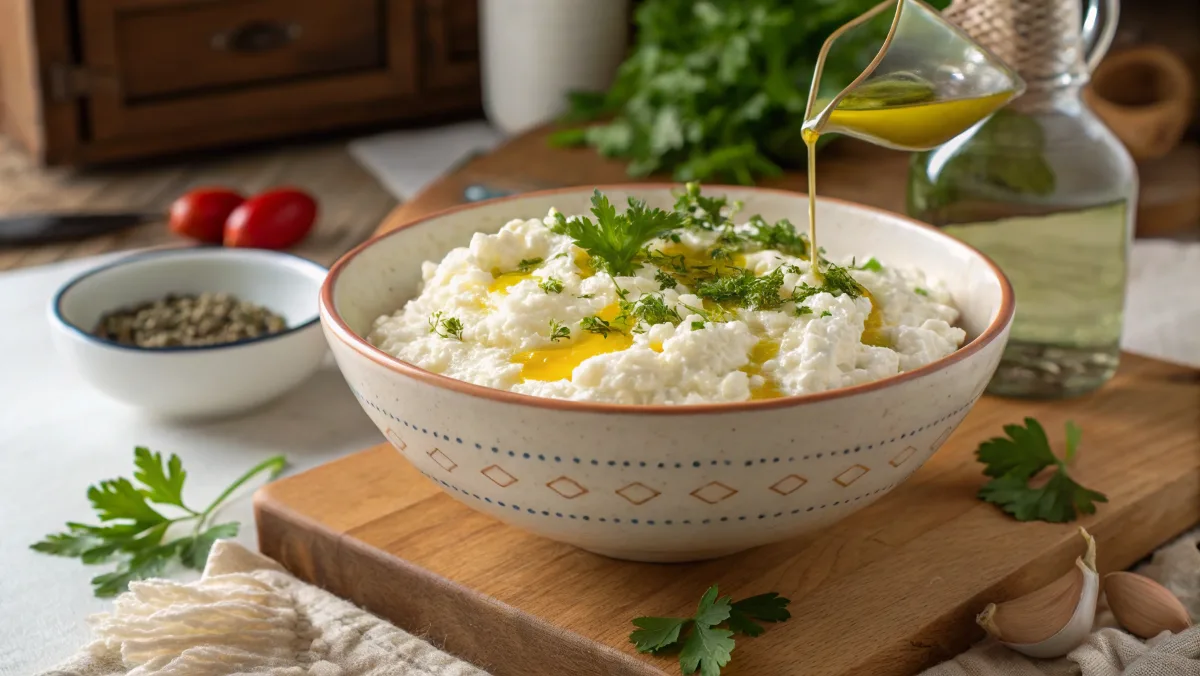Introduction
Cottage cheese is a versatile, nutritious ingredient enjoyed by millions worldwide. But what happens if you heat it up? This article explores the science, benefits, and downsides of heating cottage cheese, providing tips and recipes to help you enjoy this ingredient in warm dishes. Whether you’re curious about its nutritional changes or just need recipe inspiration, you’ll find it all here!
Cottage cheese is a versatile, nutritious ingredient enjoyed by millions worldwide. Is It Safe to Bake Cottage Cheese? Tips, Benefits, and Delicious Recipes
Table of Contents
What Happens If You Heat Up Cottage Cheese? Understanding the Basics
Cottage cheese is a staple in many households, known for its mild flavor, creamy texture, and impressive nutritional profile. It’s a versatile dairy product used in savory and sweet dishes alike. Let’s dive into what makes this cheese unique.
What is Cottage Cheese?
Cottage cheese is a type of fresh cheese made by curdling milk. The curds are drained but not pressed, allowing the cheese to retain some of its whey. This gives it its characteristic soft and lumpy texture. Cottage cheese can vary in fat content, ranging from low-fat to full-fat versions, catering to diverse dietary needs.
Nutritional Value of Cottage Cheese
Cottage cheese is often celebrated as a protein powerhouse. A typical serving (about 1/2 cup) provides:
- Protein: Around 14 grams, depending on the brand.
- Calcium: Approximately 10% of the recommended daily intake.
- Calories: 90–120, making it a low-calorie option.
Additionally, cottage cheese is rich in essential vitamins like vitamin B12 and minerals such as selenium, phosphorus, and magnesium.
How Cottage Cheese Differs from Other Cheeses
Unlike aged cheeses such as cheddar or gouda, cottage cheese is not ripened, meaning it doesn’t undergo a fermentation process for extended periods. This gives it a fresher taste and higher moisture content. Unlike harder cheeses, it’s lower in fat and sodium, making it a healthier choice for those watching their intake.
Now that you understand the basics of cottage cheese, let’s explore why you might want to heat it up and how it can transform your dishes.
Why Heat Cottage Cheese?
Cottage cheese is widely enjoyed chilled or at room temperature, but heating it can unlock new textures and flavors. While it might seem unconventional to warm up this fresh cheese, there are several reasons why doing so is worth exploring.
Why Heat Cottage Cheese? What Happens If It Gets Warm?
- As a Sauce Base
When heated, cottage cheese softens and blends easily, making it an excellent base for creamy pasta sauces, dips, or soups. Its mild flavor allows it to absorb spices and seasonings, creating rich and savory dishes. - In Baking Recipes
From pancakes to casseroles, heated cottage cheese serves as a key ingredient in many recipes. It acts as a binder and adds moisture to baked goods, giving them a soft and tender texture. - As a Protein Boost for Meals
Heating cottage cheese allows it to blend seamlessly into hot dishes, such as stuffed vegetables or rice bowls, without compromising its protein content.
Traditional Dishes That Heat Cottage Cheese
- Eastern European Dumplings (Pierogi)
In countries like Poland and Ukraine, cottage cheese is a popular filling for pierogi. When cooked, it becomes creamy and rich, pairing beautifully with onions or sour cream. - Lasagna and Casseroles
Cottage cheese is a lighter alternative to ricotta in lasagna recipes. When heated, it melds with other ingredients, adding creaminess without the heaviness of traditional cheeses. - Cheese Pancakes (Syrniki)
In Slavic cuisines, syrniki is a beloved dish where cottage cheese is mixed with flour and eggs, then fried. The heat transforms the cheese into a smooth, flavorful center.
Now that you know why heating cottage cheese is a great idea, let’s dive into the science behind what happens to cottage cheese when it’s exposed to heat.

Baked pasta dish featuring warm cottage cheese.
The Science Behind What Happens If You Heat Up Cottage Cheese
Heating cottage cheese triggers several changes in its texture, flavor, and nutritional composition. Understanding these changes can help you use it more effectively in recipes and avoid common mistakes.
What Happens to Cottage Cheese When Heated?
Cottage cheese is composed of curds and whey. When exposed to heat:
- Curds Soften: The protein structure relaxes, making the cheese creamier.
- Moisture Evaporates: Prolonged heating can cause the whey to separate further, potentially making the cheese dry or rubbery.
- Mild Browning: In baked recipes, the surface of cottage cheese may brown slightly, adding a richer flavor.
Physical and Chemical Changes During Heating
- Protein Coagulation
Cottage cheese contains casein, a milk protein that thickens when exposed to heat. This process is beneficial in recipes requiring a creamy consistency, but excessive heat can make the curds tough. - Whey Separation
When heated too quickly or at high temperatures, the whey in cottage cheese may separate, leading to curdling. To prevent this, it’s best to heat cottage cheese gently and stir frequently. - Flavor Development
Heating enhances the natural tanginess of cottage cheese, which can balance the flavors of savory or sweet dishes.
Why Cottage Cheese Changes When Heated: An In-Depth Look
Proteins in cottage cheese denature (unfold) when heated. This is a normal process that allows the cheese to integrate with other ingredients in recipes. However, overheating can degrade some amino acids, slightly reducing its nutritional value.
Exploring the science of heating cottage cheese provides a foundation for incorporating it into your favorite dishes. Up next, we’ll cover safe and effective methods to heat cottage cheese without compromising its quality.
Safe Ways to Heat Cottage Cheese Without Issues
Heating cottage cheese requires care to preserve its texture and flavor while avoiding common pitfalls like curdling or dryness. Below are some effective methods to heat cottage cheese safely.
How to Avoid Issues When Heating Cottage Cheese
- Low Heat is Key
Always use low to medium heat when warming cottage cheese on the stove. High heat can cause the curds to become rubbery or separate from the whey. - Use a Double Boiler
For gentle, even heating, use a double boiler. Place the cottage cheese in the upper pot while the bottom pot contains simmering water. This indirect heat prevents overheating and maintains a creamy texture. - Add Liquid
Mixing a small amount of milk or cream with the cottage cheese can help maintain moisture and prevent it from becoming too dry during the heating process.
Using the Microwave Safely
- Microwave in Short Bursts
To avoid uneven heating, microwave cottage cheese in 15-20 second intervals, stirring between each burst. - Cover the Bowl
Use a microwave-safe lid or plastic wrap to cover the bowl. This traps steam, ensuring even heating and preventing the cheese from drying out. - Avoid Overheating
Limit the total heating time to under two minutes, as prolonged microwaving can lead to undesirable texture changes.
Avoiding Overheating or Burning
- Don’t Preheat Empty Pans
If using a skillet, ensure it’s not preheated before adding cottage cheese. Preheated surfaces can cause rapid drying or burning. - Monitor Constantly
Whether using a stove or microwave, keep a close eye on the cottage cheese. Stirring frequently ensures even heating and prevents scorching. - Combine Ingredients Gradually
When using cottage cheese in a recipe, mix it with other ingredients before applying heat. This helps distribute heat evenly and prevents clumping.
Using fresh cottage cheese is key to achieving the best results. How to Properly Store Cottage Cheese for Optimal Freshness

Bell peppers stuffed with a cottage cheese and quinoa filling.
What Happens If Cottage Cheese Is Cooked? Benefits You Should Know
Heating cottage cheese may seem unconventional, but it can elevate this versatile ingredient in surprising ways. From enhancing flavors to improving digestibility, warming cottage cheese has several benefits worth exploring.
Enhanced Flavor and Texture
- Richer Taste
Heating intensifies the natural tanginess of cottage cheese, making it more robust and flavorful. This can be especially beneficial in savory dishes like pasta or casseroles. - Creamier Consistency
The protein structure softens when warmed, creating a smoother, creamier texture. This transformation is ideal for soups, sauces, or dips.
Improved Versatility in Recipes
- Expanded Culinary Applications
Warm cottage cheese can be used in a wider variety of dishes, from baked goods to savory entrees. For example, it acts as a binder in recipes like lasagna or stuffed peppers. - Better Integration with Ingredients
When heated, cottage cheese blends seamlessly with other ingredients, enhancing the overall flavor profile of a dish.
Digestive Benefits of Warmed Cottage Cheese
- Easier on the Stomach
For individuals sensitive to cold foods, heating cottage cheese can make it more soothing and easier to digest. - Enhanced Nutrient Absorption
The warming process can aid in breaking down proteins, making them more accessible for absorption by the body.
While heating cottage cheese provides these benefits, it’s important to use proper techniques to preserve its nutritional value and texture. The next section will address potential downsides to keep in mind when warming this dairy favorite.
Potential Downsides of Heating Cottage Cheese
While heating cottage cheese offers numerous benefits, there are a few potential drawbacks to consider. Understanding these downsides can help you avoid common pitfalls and get the most out of this versatile ingredient.
Does It Lose Nutritional Value?
- Protein Denaturation
When exposed to high heat, the proteins in cottage cheese may denature, which can slightly reduce their effectiveness in supporting muscle repair and growth. However, this change is minor and doesn’t negate its overall nutritional benefits. - Loss of Certain Vitamins
Some heat-sensitive vitamins, such as vitamin B12, may degrade when cottage cheese is heated at high temperatures for extended periods. To retain its full nutritional profile, opt for gentle heating methods.
Texture Changes to Watch Out For
- Dryness
Heating cottage cheese without adding moisture can cause it to dry out. This is especially common if it’s heated too quickly or for too long. Adding milk, cream, or another liquid can help maintain its creamy consistency. - Curdling
Excessive heat can cause the curds to separate from the whey, resulting in an unappealing, lumpy texture. To prevent curdling, always use low to medium heat and stir frequently.
Flavor Alterations
- Overpowering Tanginess
Heating cottage cheese can amplify its tangy flavor, which may not be desirable in all dishes. Balancing it with complementary ingredients, such as herbs, spices, or sweeteners, can help achieve the desired taste. - Loss of Freshness
The fresh, light flavor of cottage cheese may be diminished when warmed. While this change is minimal, it can impact recipes where a neutral taste is preferred.
By being mindful of these potential downsides, you can minimize risks and make the most of heated cottage cheese. Next, we’ll dive into some delicious recipes that incorporate this ingredient in its warm form.
Popular Recipes Using Heated Cottage Cheese
Cottage cheese is not only nutritious but also incredibly versatile when warmed. Whether you prefer savory or sweet, heated cottage cheese can be the star ingredient in a variety of dishes. Here are some popular recipes to inspire your culinary adventures.
Cottage Cheese Pancakes
These fluffy, protein-packed pancakes are perfect for breakfast or brunch.
- Ingredients:
- 1 cup of cottage cheese
- 2 large eggs
- ½ cup of flour (or almond flour for a gluten-free option)
- 1 tablespoon of sugar (optional)
- ½ teaspoon of baking powder
- Pinch of salt
- Instructions:
- In a mixing bowl, combine cottage cheese, eggs, and sugar (if using).
- Gradually mix in flour, baking powder, and salt to form a smooth batter.
- Heat a non-stick pan over medium heat and lightly grease it with butter or oil.
- Spoon small portions of batter onto the pan and cook until bubbles form, then flip and cook the other side.
- Serve with fresh fruit, syrup, or a dollop of yogurt.
Baked Pasta with Cottage Cheese
This dish is a lighter alternative to traditional baked pasta, featuring cottage cheese for creaminess.
- Ingredients:
- 12 oz of pasta (penne or rigatoni work well)
- 1 cup of cottage cheese
- 1 cup of marinara sauce
- 1 cup of shredded mozzarella cheese
- ½ teaspoon of dried basil or oregano
- Instructions:
- Preheat your oven to 375°F (190°C).
- Cook the pasta according to package instructions and drain.
- In a mixing bowl, combine cooked pasta, cottage cheese, marinara sauce, and herbs.
- Transfer the mixture to a greased baking dish and top with shredded mozzarella.
- Bake for 20-25 minutes, or until the cheese is bubbly and golden.
Stuffed Bell Peppers with Cottage Cheese
These colorful, protein-packed peppers are both healthy and delicious.
- Ingredients:
- 4 large bell peppers (any color)
- 1 cup of cooked quinoa or rice
- 1 cup of cottage cheese
- ½ cup of diced vegetables (zucchini, onions, or mushrooms)
- 1 teaspoon of garlic powder
- Salt and pepper to taste
- Instructions:
- Preheat your oven to 375°F (190°C).
- Cut the tops off the bell peppers and remove the seeds.
- In a bowl, mix quinoa or rice, cottage cheese, diced vegetables, and seasonings.
- Stuff each pepper with the mixture and place them in a baking dish.
- Cover with foil and bake for 25 minutes. Remove the foil and bake for an additional 10 minutes.
These recipes showcase the versatility of heated cottage cheese, making it a great addition to any meal. In the next section, we’ll explore how warmed cottage cheese compares to its cold counterpart in taste, texture, and nutrition.
Want more inspiration? Baked Cottage Cheese Recipe – Creamy, Healthy, and Delicious.

Cottage cheese pancakes with syrup and berries.
Comparing Heated vs. Cold Cottage Cheese
Cottage cheese is versatile enough to be enjoyed either cold or heated, but the choice depends on your preferences and recipe needs. Here’s how the two forms stack up in terms of taste, texture, and nutrition.
Taste Comparison
- Cold Cottage Cheese
- Fresh and mild, cold cottage cheese is perfect for salads, fruit bowls, or as a standalone snack. Its flavor pairs well with both sweet and savory ingredients.
- Heated Cottage Cheese
- When warmed, the tanginess of cottage cheese becomes more pronounced, adding depth to savory dishes. The slight browning during cooking can even create nutty, roasted notes in baked recipes.
Texture Differences
- Cold Cottage Cheese
- Maintains a firm, lumpy texture due to the separation of curds and whey. This is ideal for dishes requiring structure, like topping crackers or mixing with raw vegetables.
- Heated Cottage Cheese
- Becomes creamier and smoother as the proteins soften under heat. It blends seamlessly into sauces, soups, and baked goods, offering a velvety consistency.
Which is Better for Different Recipes?
- Cold Dishes
- Use cold cottage cheese for dishes like fruit parfaits, smoothie bowls, or savory dips. Its cool temperature and fresh taste work best in raw or minimally processed recipes.
- Warm Dishes
- Heated cottage cheese shines in recipes such as casseroles, stuffed peppers, and baked pasta. Its creamy texture and enhanced flavor contribute to the richness of cooked dishes.
Nutritional Differences
- Cold Cottage Cheese
- Retains all its original nutrients, including high protein content, calcium, and vitamins like B12.
- Heated Cottage Cheese
- While heating may result in minimal nutrient loss, the overall nutritional value remains largely intact. Gentle heating methods can preserve most of its beneficial properties.
Expert Tips for Cooking with Cottage Cheese
Cooking with cottage cheese can elevate your dishes, but achieving the best results requires some know-how. These expert tips will help you maintain its flavor, texture, and nutritional value while incorporating it into your recipes.
Best Practices for Incorporating Cottage Cheese in Recipes
- Choose the Right Fat Content
- Use full-fat cottage cheese for creamier dishes, such as sauces or baked goods.
- Opt for low-fat or fat-free varieties in lighter recipes like smoothies or salads.
- Blend for Smoothness
- If a recipe calls for a creamy consistency, blend cottage cheese with a splash of milk or cream. This works well for dips, sauces, or soups.
- Season Appropriately
- Cottage cheese has a mild flavor that benefits from added spices, herbs, or sweeteners, depending on the dish. For savory recipes, try garlic, paprika, or dill. For sweet recipes, cinnamon or vanilla work wonders.
How to Prevent Cottage Cheese from Curdling
- Heat Gradually
- Always use low to medium heat and stir frequently to prevent curdling. Sudden temperature changes can cause the curds to separate from the whey.
- Combine with a Starch
- Mixing cottage cheese with a starch, such as flour or cornstarch, before heating can stabilize it and prevent curdling. This is especially useful in casseroles or sauces.
- Avoid Prolonged Cooking
- Cottage cheese doesn’t require long cooking times. Add it toward the end of cooking to preserve its texture and flavor.
Combining Cottage Cheese with Other Ingredients
- Pairing with Acidic Ingredients
- Be cautious when mixing cottage cheese with acidic ingredients like lemon juice or tomatoes. The acidity can cause curdling. To avoid this, temper the cottage cheese by mixing it with a neutral liquid like milk or cream first.
- Layering for Texture
- In layered dishes like lasagna, use cottage cheese as a middle layer to prevent direct exposure to high heat. This ensures it stays moist and creamy.
- Balancing Sweet and Savory
- Cottage cheese pairs well with both sweet and savory ingredients. Use honey, fruits, or cinnamon for breakfast dishes, or combine with garlic, spinach, or meats for savory meals.
FAQs
Cottage cheese is a popular ingredient, but many people have questions about how it reacts to heat. Here are answers to some of the most common queries to help you cook with confidence.
1. Is it okay to heat cottage cheese?
When cottage cheese gets warm, the curds soften, and the texture becomes creamier. However, excessive heat can cause the whey to separate from the curds, leading to a grainy consistency.
2. What happens if cottage cheese gets warm?
When cottage cheese gets warm, the curds soften, and the texture becomes creamier. However, excessive heat can cause the whey to separate from the curds, leading to a grainy consistency.
3. Is it safe to warm cottage cheese in the microwave?
Yes, heating cottage cheese in the microwave is safe if done correctly. Use short intervals (15-20 seconds) and stir between each burst to ensure even heating and avoid overcooking.
4. Does cottage cheese lose its protein when cooked?
Cooking cottage cheese does not significantly reduce its protein content. While heating may denature some proteins, this change doesn’t affect their nutritional value or how your body absorbs them.
5. Is cooked cottage cheese healthy?
Yes, cooked cottage cheese remains a healthy option. It retains its high protein content, essential vitamins, and minerals, making it a nutritious addition to both sweet and savory recipes.
6. Is it safe to heat cheese?
Yes, it’s safe to heat most types of cheese, including cottage cheese. However, each cheese has unique melting properties, so it’s important to use the right heating method for the desired outcome.
Conclusion
Cottage cheese is a versatile ingredient that can be enjoyed in various ways, whether cold or heated. Heating cottage cheese enhances its flavor, improves its texture, and opens up endless culinary possibilities, from savory casseroles to fluffy pancakes. By using gentle heating methods and following expert tips, you can make the most of this nutritious, protein-rich cheese in your cooking.
Whether you’re trying it warm for the first time or looking for new recipe ideas, heated cottage cheese offers a delicious twist to your meals. Experiment with the methods and recipes shared in this guide to discover how it can transform your favorite dishes.
Experiment with the methods and recipes shared in this guide to discover how it can transform your favorite dishes. Explore more tips and recipes for cooking with cottage cheese.

